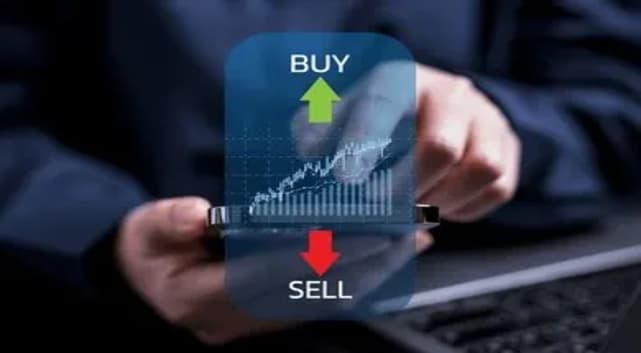Key Takeaways:
- The 2-Minute Valuation Model values UnitedHealth stock at $664/share in 2 years, implying 30% upside today.
- UnitedHealth has averaged 17% annual returns over the past decade (not including dividends), so it makes sense that the stock could offer 14% annual returns over the next 2 years.
- Get accurate financial data on over 100,000 global stocks for free on TIKR >>>
UnitedHealth Group (UNH) stock has fallen over 15%, following the unexpected passing of UnitedHealthcare’s CEO, Brian Thompson. This loss has had a significant impact on the company and its leadership.

Despite the short-term uncertainty, UnitedHealth appears undervalued today, with analysts estimating a 25% upside potential.
As the largest U.S. health insurer, UnitedHealth boasts a strong competitive position, providing essential healthcare services to millions of Americans.
The stock is also an excellent dividend payer, with a history of consistent dividend growth and plenty of room for further increases, thanks to its strong earnings and cash flow.
At its current valuation, UnitedHealth offers a compelling combination of long-term growth with a short-term undervaluation, making it an attractive opportunity for long-term investors.
UnitedHealth Group stock could be undervalued. See how you can value stocks quicker with TIKR! >>>
What is the 2-Minute Valuation Model?
There are 3 core factors that drive a stock’s long-term value:
- Revenue Growth: How big the business becomes.
- Margins: How much the business earns in profit.
- Multiple: How much investors are willing to pay for a business’s earnings.
Our 2-Minute Valuation Model uses a simple formula to value stocks:
Expected Normalized EPS * Forward P/E ratio = Expected Share Price
Revenue growth and margins drive a company’s long-term normalized EPS, and investors can use a stock’s long-term average P/E multiple to get an idea of how the market values a company.
Is UnitedHealth Group Undervalued?
Forecast
On UHG’s Analyst Estimates tab shown below, you can see analysts expect the company to grow revenue at a 9.4% compound annual growth rate over the next 3 years, while normalized earnings per share, or EPS, are expected to grow just over 11% per year due to increasing profit margins:

View UHG’s full analyst estimates >>>
For context, over the past 5 years, UnitedHealth’s revenue grew at nearly 11% per year, while normalized earnings grew at about 13% per year.
That means the company is expected to see slightly lower growth going forward than it has in the past.
Valuation Multiple
UnitedHealth Group stock currently trades at around $510/share, which means the stock trades at just over 1 times next year’s expected revenue and 17 times next year’s expected earnings.
A good rule of thumb is to look for companies trading at a P/E ratio lower than their expected annual earnings growth. UnitedHealth is expected to grow its EPS by 11% annually over the next 3 years, so a 17x P/E ratio is 1.5x expected annual earnings growth.
However, in today’s market, many wide-moat, blue-chip companies are trading at P/E multiples that are double their expected earnings growth or even higher.
Put simply, investors are paying up to own high-quality American companies.
By comparison, UnitedHealth’s 17x P/E multiple for 11% annual earnings growth seems pretty reasonably priced.
UnitedHealth has averaged a 17x forward P/E multiple over the past 5 years, so we’ll use this multiple in our valuation:

Fair Value
3 years from now, analysts estimate that UnitedHealth could reach about $37.95 in normalized EPS. At a 17x NTM P/E multiple, that values UHG stock in 2 years at $645/share.
(The NTM P/E multiple uses the expected earnings for the next twelve months, so a 2-year valuation uses 3-year EPS forecast figures.)
UnitedHealth is also expected to pay around $19/share in dividends, which brings our total fair value to $664/share.
With the stock trading at about $510 today, this implies that UnitedHealth stock could rise about 14% per year over the next 2 years, or 30% in total:

For reference, the stock market has averaged 10% annual returns over the long term.
That makes UnitedHealth Group’s potential 14% annual returns over the next 2 years seem pretty attractive.
Analysts are bullish on UnitedHealth Group stock as well.
Analysts’ Price Target
The consensus price target for UnitedHealth Group is currently $636 per share, based on estimates from 27 analysts. This suggests nearly 25% upside potential.
Of those 27 analysts, 19 rate the stock a buy.
You can see why this matters when we look at the 5-year history of analysts’ price targets for $UNH stock versus the stock’s actual performance.
Overall, when analysts saw UnitedHealth as undervalued, the stock tended to perform strongly.
The blue line below shows analysts’ estimated upside for UnitedHealth stock over the past 5 years.
When the blue line was high, analysts thought UnitedHealth stock was undervalued. When the blue line was low, analysts thought the stock was overvalued.
The black line simply tracks UHG’s stock price, which climbed steadily from 2020 to 2022 but flattened in 2023.
You can see analysts see nearly 25% upside today for UnitedHealth today:

Find the best stocks to buy today with TIKR >>>
TIKR Takeaway
Using the 2-Minute Valuation Model, UnitedHealth Group stock appears undervalued and could deliver 14% annual returns over the next 2 years.
Of course, this is just a valuation exercise. No one knows where a stock is headed in the short term, and few can predict where a stock is heading in the long term.
The TIKR Terminal offers industry-leading financial data on over 100,000 stocks and was built for investors who think of buying stocks as buying a piece of a business.
Disclaimer:
Please note that the articles on TIKR are not intended to serve as investment or financial advice from TIKR or our content team, nor are they recommendations to buy or sell any stocks. We create our content based on TIKR Terminal’s investment data and analysts’ estimates. We aim to provide informative and engaging analysis to help empower individuals to make their own investment decisions. Neither TIKR nor our authors hold positions in any of the stocks mentioned in this article. Thank you for reading, and happy investing!






